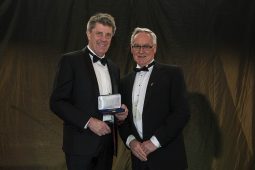News
Published 26 November 20162016 TK Sidey Medal: Getting a clearer image of biomolecules and tissue

Professor Rick Millane from the University of Canterbury has been awarded the T.K. Sidey Medal from the Royal Society of New Zealand for his contributions to methods for imaging biological molecules.
His theoretical and computational methods for imaging biological molecules and tissue using x-rays and optical radiation allow their structures to be determined, which is key to understanding disease, for drug design and for non-invasive medical imaging.
Professor Millane said that he was “delighted and honoured” to receive the award, particularly since the first T.K. Sidey Medal was awarded to Ernest Rutherford in 1933. “I am grateful to the many students and colleagues around the world who have supported and contributed to my research.”
Professor Millane is well known internationally for his work on ‘phase retrieval’ methods, an important component of x-ray diffraction imaging, publishing his first papers in this area in the early 1990s.
His phase retrieval algorithms have been applied to the latest imaging technology: x-ray free electron lasers (XFELs), which use x-ray pulses short enough and intense enough to image biomolecules that have defied conventional imaging methods, and use nano-scale crystals with just a few unit cells in each direction. This technology has the potential to greatly advance understanding of disease processes and drug design.

Professor Rick Millane receives the TK Sidey Medal from Professor Barry Scott
The medal selection committee acknowledged him as a leader in advancing algorithms that are suitable for this new technology. He was awarded a prestigious James Cook Research Fellowship in 2012 from the Royal Society of New Zealand to work on this topic.
Professor Millane has also worked on fibre diffraction analysis for imaging and determining the structures of disordered or non-crystalline substances, including biopolymers such as DNA and sugars in connective-tissue.
His work on optical diffusion imaging has contributed to a new non-invasive medical imaging technique.
Professor Millane is based in the Department of Electrical and Computer Engineering at the University of Canterbury. He is a Fellow of the Institution of Professional Engineers of New Zealand, the International Society for Optics and Photonics and the Optical Society of America. He is frequently invited to give lectures overseas.
T.K. Sidey Medal:
For excellence in scientific research in electromagnetic radiation.
Citation:
To Rick Paul Millane for his wide-ranging and fundamental work in x-ray diffraction imaging, diffraction theory, and optical diffusion imaging, and their application in biology and medicine
